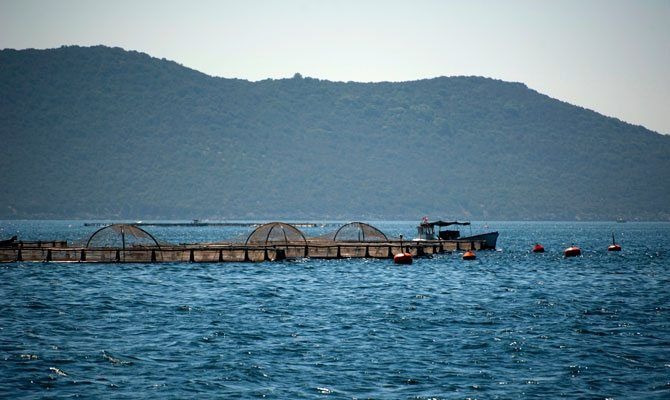Do These Fish Harm The Oceans?
This is one in a series of stories; visit The Daily Meal Special Report: Water for more.
"With earth's burgeoning populations to feed, we must turn to the sea with new understanding and new technology. We must learn to farm the sea as we have farmed the land." — Jacques Cousteau
Sustainability can be loosely defined as a method of harvesting a resource without completely and permanently depleting it, though some would argue that it's more than that: It's a whole philosophy of how to use the earth's natural resources.
One of the greatest of those resources, and arguably the one most in need of sustaining, is water. The oceans, stretching across the globe, are an integral part of all life. They are essential to the carbon cycle, they influence weather and climate (which are not the same thing), and support a plethora of living species — many of which we humans rely upon for sustenance and nutrition, directly or indirectly.
Aquaculture is the farming of aquatic plants and animals under controlled conditions. In large part, that means fish. We're constantly told that eating seafood is a healthy habit, and we depend on fish for vital nutrients, including the omega-3 fatty acids that are essential for brain health and fetus development. As stocks of wild fish around the world decline, we obviously need a way to raise fish safely and sustainably ourselves — through aquaculture. In a recent webinar on the subject, Dr. Michael Tlusty, Director of Ocean Sustainability Science at the New England Aquarium, pointed out that "[T]he development [of aquaculture] has increased over the past 30 to 40 years, wild fisheries have become stationary, and we need to rely on the growth of aquaculture." Tlusty went on the state that today "half of the global seafood is from aquaculture and will be 60 percent by 2030."
Unfortunately, there are problems with current aquacultural practices. Water pollution is one. For example, water that flows out of an aquaculture facility can carry pollutants such as bacteria, chemicals, antibiotics, pesticides, growth hormones, dyes, and diseased organisms straight into the open ocean. This can in turn cause damage ocean wildlife and poison ocean habitats. Discarded feed and fecal matter also occurs in the wastewater from these types of operations. These can dissipate oxygen levels in the water, leaving it murky and rank-smelling and killing wild seafood. The waste can also settle on the seafloor, disturbing and polluting the organisms that live there. The anti-fouling chemicals used on the cages and pens can also contribute to ocean contamination. Toxins found in these agents have been linked to reproductive and immune problems in ocean wildlife.[pullquote:left]
Another issue is that each year, millions of farmed fish escape into open waters and interbreed with wild fish, potentially polluting the natural genetic pool, and possibly leading to the extinction of natural species. The feed for farmed fish also depletes the wild fish population. Farmed fish are often fed wild fish after being processed into fish meal or oil. These wild fish are an essential part of the ocean ecosystem and it can take two to six pounds of wild fish to raise one point of farmed fish. Salmon and tuna are popular aquaculture fish that are one some of the fastest growing seafood products, and extremely dependent on wild fish as feed.
Several organizations are working to better the situation. The Aquaculture Improvement Projects (AIP) is an alliance of producers, suppliers, and buyers who are working together to address these issues and trying to identify workable aquaculture "zones." Without zoning, one farm's inlet could be next to another farm's outlet; too many cages can co-exist in one area, releasing too many nutrients and waste escaping into one habitat. The Sustainable Fish Partnership (SFP) is aiming to reduce the amount of antibiotics released into the water by seeking to treat the causes of disease rather than the symptoms. SFP believes that more planning and coordination between the fish farming industry and regulators is necessary. Oceana works to stop the expansion of the farming industry until legislation and regulations that protect the ocean are in place. They aim to raise the sanitation standards for these farms in order to lessen water contamination and protect marine life. New aquaculture technology is also helping to address some of these issues. Free-floating spheres made of galvanized steel wire that can be transferred to different locations may result in less pollution in concentrated areas.
While we are still far from where we should be, we have a vision of where this sustainability movement needs to be. And there are several groups and organizations that are aiming to better the situation and help gear us toward the right aquaculture practices. There needs to be a common ground between aquaculture and the safety of our ocean that lowers the farm's environmental impact while still producing the fish needed to sustain our population. If aquaculture is the future of seafood and our ocean, we have to learn how to do responsibly.
